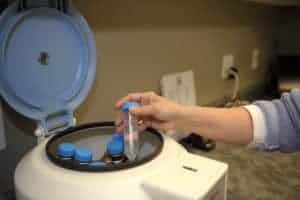
Study Shows Omeprazole Prevents Ulcers in Young Racehorses
A study confirms omeprazole can prevent gastric ulcer formation in young racehorses.


A study confirms omeprazole can prevent gastric ulcer formation in young racehorses.

Researchers found that recovery periods during conditioning could improve horse training efficacy.

Researchers collected information about health problems experienced by young horses being prepped for sale.

While some studies support the use of equine nasal strips, others have yielded less promising results.

Freezing or inhibiting fecal samples from diarrheic horses allows C. perfringens detection for weeks longer.

Freezing or inhibiting fecal samples from diarrheic foals and horses allows scientists to detect C. perfringens in the samples for at least five weeks, upping the chances of diagnosis.

Test for the common endocrine disorders Cushing’s disease and equine metabolic syndrome and treat accordingly.

Researchers recently identified risk factors for bad behavior in a population of Pony Club horses.

There are two main types of pharmaceutical drugs: those manufactured by pharmaceutical companies and are FDA approved; and those that are “compounded” by either a licensed veterinarian or pharmacist. In equine medicine, compounded drugs are only considered if a horse needs to be treated with a medication but no FDA-approved formulation is licensed for horses.
The War Horse Welfare Education Fund will receive $10 from each ticked bought by an OEF member.

West Nile Virus (WNV) causes a potentially fatal encephalomyelitis (inflammation of the brain and spinal cord) in a variety of species such as birds, horses, and humans.
One researcher concluded, “Pinch grafting is the easiest grafting technique in horses, requires no specialized equipment, and has a similar rate of positive outcomes as other, more advanced grafting techniques.”

Numerous therapeutic modalities are available for equine athletes with stifle injuries, and still others are being examined. Owners of affected horses should consult their veterinarian about which treatment option best suits each patient.

A research team has achieved success rates greater than 97% in identifying genetic disorders in horse embryos. The group is offering the test with the provision that there is still a small chance (<3%) for error.

Using cooled-shipped semen to breed mares is a common practice, but not all spermatozoa tolerate cooling well.

With neither cure nor vaccine in existence, veterinarians and researchers must supervise EIA closely.
Stay on top of the most recent Horse Health news with